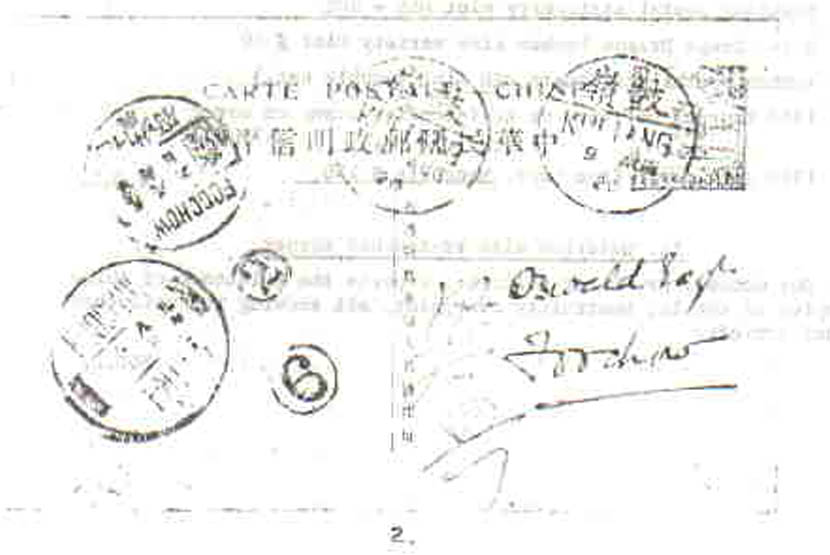The Standard Datestamps of 1899 Onwards
by P.I. Padget
In mid-1899 a standard circular cancellation was introduced, having the town name in Chinese above and English below. (Fig. 1) Underneath, the date is expressed in the Western calendar. On a few occasions, the final figure does not represent the year but is a different indicator.
The earliest strikes known to me are 17 May 1899 from Peking and 19 May 1899 from Soochow. This kind were used at least until 1914, with 1900-1904 being the peak period. The diameter of the circle varies slightly between 24½mm and 26mm. The following is the list of towns I which used this cancel — no doubt there are many more:
| Amoy Antung Canton Changsha Chefoo Chentu Chinhai Chinkiang Chungking Foochow Hangchow Hankow Hanyang Harbin Hsian |
Hokow Ichang Kiachow Kiasing Kiukiang Kiungchow Kongmoon Kuling Lungchow Manchouli Mengtsz Moukden Nanking Nanning Newchwang |
Ngankin Ningpo Pagoda Anch. Pakhot Paoting Peking Samshui Santuao Shanghai Shasi Soochow Swatow Szhmao Taiyuan Taiyuanfu |
Tangju Tangshan Tatung Tengyuen Tientsin Wenchow Whampoa Woosung Wucheng Wuchow Wuhu Wusueh Yochow Yochow City |
All the above are normally struck in black but Canton, Hankow, Kiaochow, Shanghai and Tientsin may be found in blue and Newchwang in purple
A similar but larger (19mm diameter) example is shown in figure 2. This comes from Kuling and is the only example I have noted in this larger size. In addition to the above types, there are a few rather crude datestamps of the same general type.
Tungchow (fig.3) has a space for a manuscript date but at Kiangyin the year was incorporated into the cancel, with the day and month being added by hand or by rubber stamp. No less than three types of this kind were used, with strikes with 1901 dates having a diameter of 29mm and capitals 3½mm high. In 1902 a much smaller date appeared (fig.4) and finally in 1903 there was a return to a diameter of 29mm, but this time the capitals were 5mm high (fig.5).

